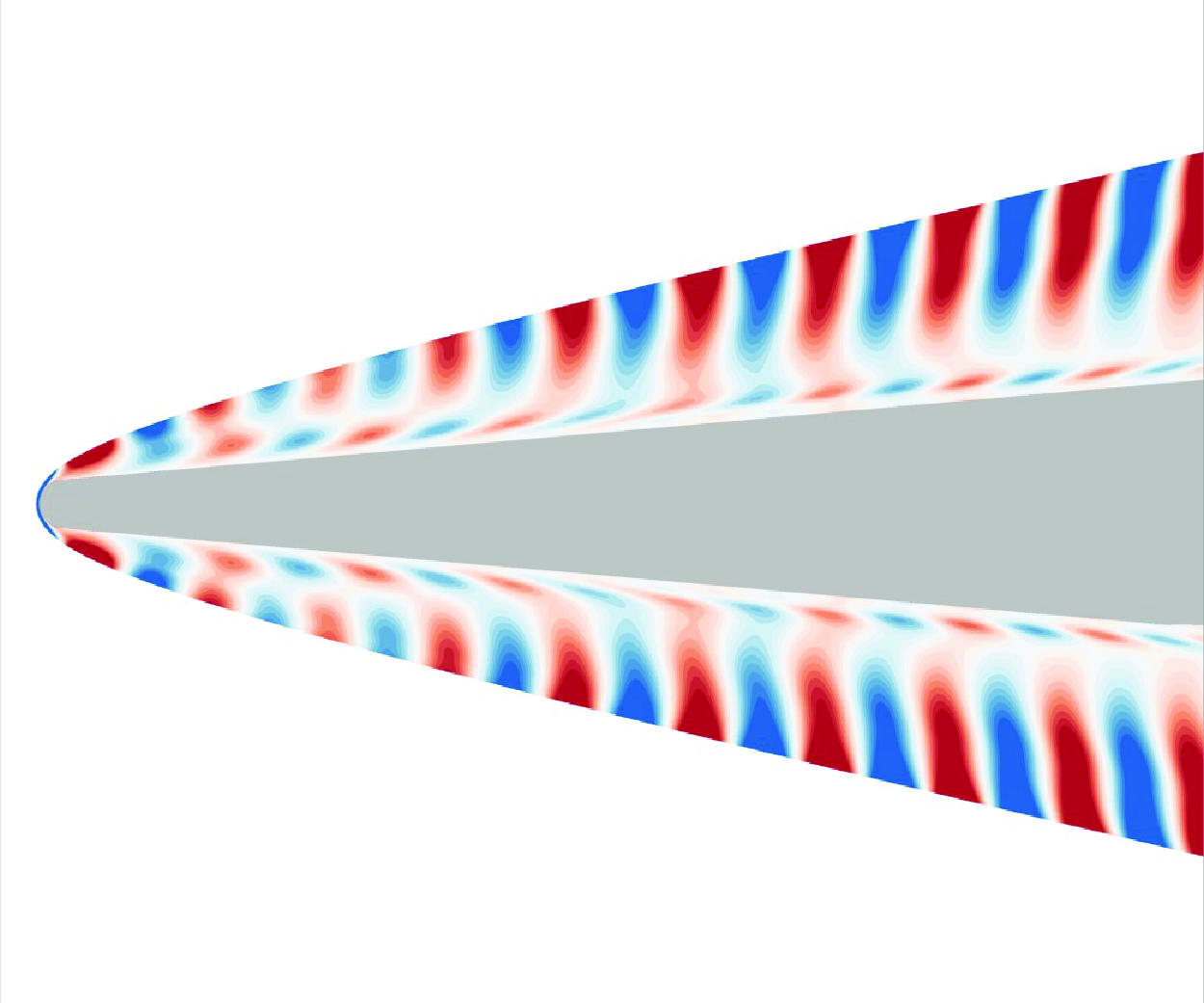No CrossRef data available.
Article contents
Hypersonic boundary-layer receptivity to free-stream acoustic waves with thermochemical non-equilibrium effects
Published online by Cambridge University Press: 17 June 2025
Abstract

Many hypersonic flows of interest feature high free-stream stagnation enthalpies, which lead to high flow-field temperatures and thermochemical non-equilibrium (TCNE) effects, such as finite-rate chemistry and vibrational excitation. However, very few studies have considered receptivity for high-enthalpy flows. In this paper, we investigate the receptivity of a high-enthalpy Mach 5 straight-cone boundary layer to slow and fast acoustic free-stream waves using direct numerical simulation alongside linear stability theory and the linear parabolised stability equations. In addition, we investigate the TCNE effect on receptivity by comparing results between the TCNE gas model and a thermochemically frozen gas model. The dominant instability mechanism for this flow configuration is found to be Mack’s second mode, with the unstable mode being the fast mode. Second-mode receptivity coefficients are obtained for a number of frequencies. For free-stream slow acoustic waves, these receptivity coefficients are found to generally increase with frequency. For a small subset of the considered frequency range, the receptivity coefficients corresponding to free-stream fast acoustic waves are found to be several times larger than for free-stream slow acoustic waves. The TCNE effects are found to lead to higher peak  $N$-factors while also reducing second-mode receptivity coefficients, indicating that TCNE effects have competing impacts on receptivity versus stability for the considered frequencies.
$N$-factors while also reducing second-mode receptivity coefficients, indicating that TCNE effects have competing impacts on receptivity versus stability for the considered frequencies.
Information
- Type
- JFM Papers
- Information
- Copyright
- © The Author(s), 2025. Published by Cambridge University Press


